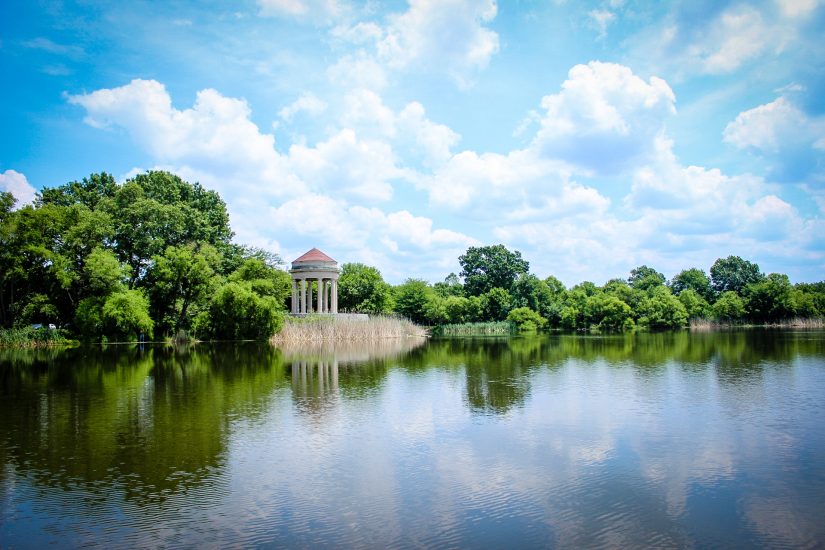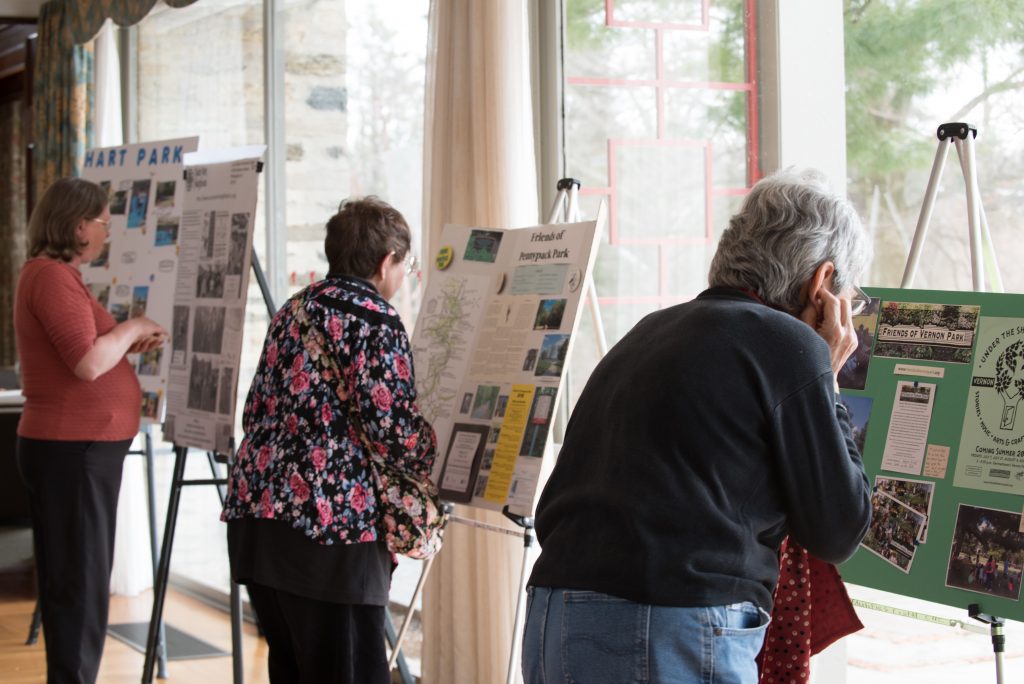Barbara Capozzi describes herself as an “FDR Park lover for over 50 years.” And she’s not alone.
“FDR Park attracted thousands of people on weekends when I was a child,” says Capozzi, who is on the board of Friends of FDR Park. “Now, I spend several hours per week there. There is no place that offers peace and quiet, fresh air, natural beauty, a glimpse of wildlife, gorgeous water views, opportunity and space to run, walk, bike, hike, play tennis, golf, soccer, softball, baseball, read under a tree […]. in a such a safe and tranquil setting.”
But despite all that FDR Park offers, decades of heavy use have put a toll on the 348-acre park. Today, it suffers from a long list of maintenance issues, littering, and flooding. That’s why, for the first time in its nearly 100-year history, FDR Park is getting a new master plan.
Over the next nine to 12 months, the planning team—Fairmount Park Conservancy, Philadelphia Parks & Recreation, WRT, and Friends of FDR Park—will work closely with the many communities and stakeholders who have invested in FDR Park over its long history and can help shape the shared vision of the park’s future.
With the master planning process officially underway, take a trip down memory lane to learn about FDR Park’s past, present, and future.
FDR Park: Then
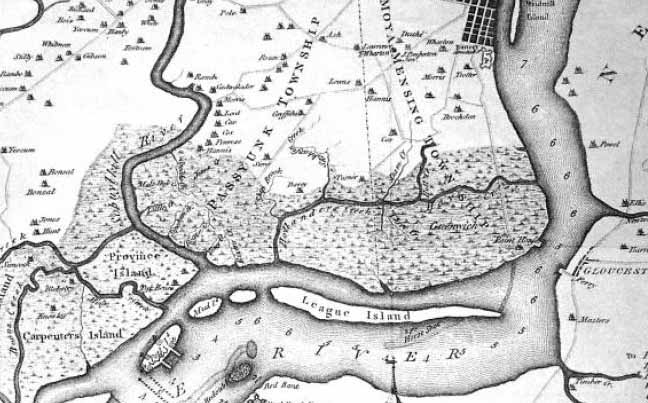
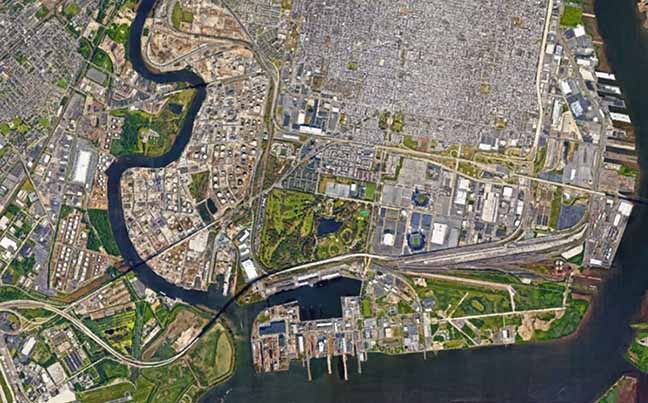
Before: A plan of the City of Philadelphia published in London, England in 1777, showing the marsh that would eventually become FDR Park park. After: An aerial view of FDR Park today via Google Earth.
Long before it became the South Philly staple it is today, the land that is now FDR Park consisted of acres upon acres of wetlands and marshes separated from “mainland” Philadelphia by Hollander Creek, which ran between the Delaware and Schuylkill Rivers. Between the late 1700s and early 1900s, these marshes were slowly drained and filled to support agriculture and eventually residential development. It wasn’t until 1913 that the Olmsted Brothers, the sons of the prominent landscape architect Frederick Law Olmsted of New York’s famed Central Park, designed League Island Park.
Shaped by their father’s romantic vision of landscape architecture, the Olmsted Brothers designed a picturesque park with curving roads and paths, curated views of architecture and landscape, and a series of tidal lakes encompassing the remains of Hollander Creek. The park, in fact, would go on to earn the nickname “The Lakes,” and become a popular swimming spot for Philadelphians.
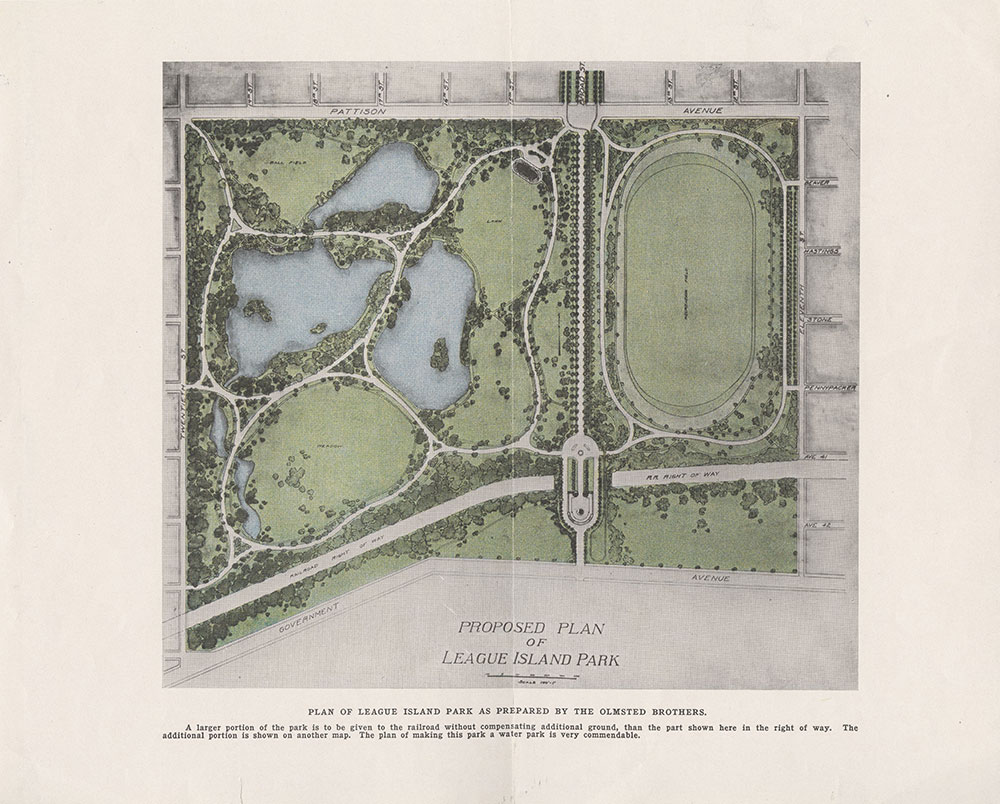
The original League Island Park plan by the Olmsted Brothers, 1913. Courtesy of Free Library of Philadelphia, Map Collection
In 1926, League Island Park became a site of the Sesquicentennial Exposition of American Independence. A number of architecturally significant structures were built in the park, including the Municipal Stadium east of Broad and the American Swedish Historical Museum west of Broad Street, which remains to this day.
Following the celebration, the park returned to its original purpose as a public park, although the City continued to develop the area east of Broad Street. Today, this stretch of the park is now known as Stadium District. The Olmsted’s original design was further altered in the 1940s, when a golf course was added to the western side. At the same time, the park itself was renamed Franklin Delano Roosevelt Park in honor of the former U.S. president.
FDR Park: Now
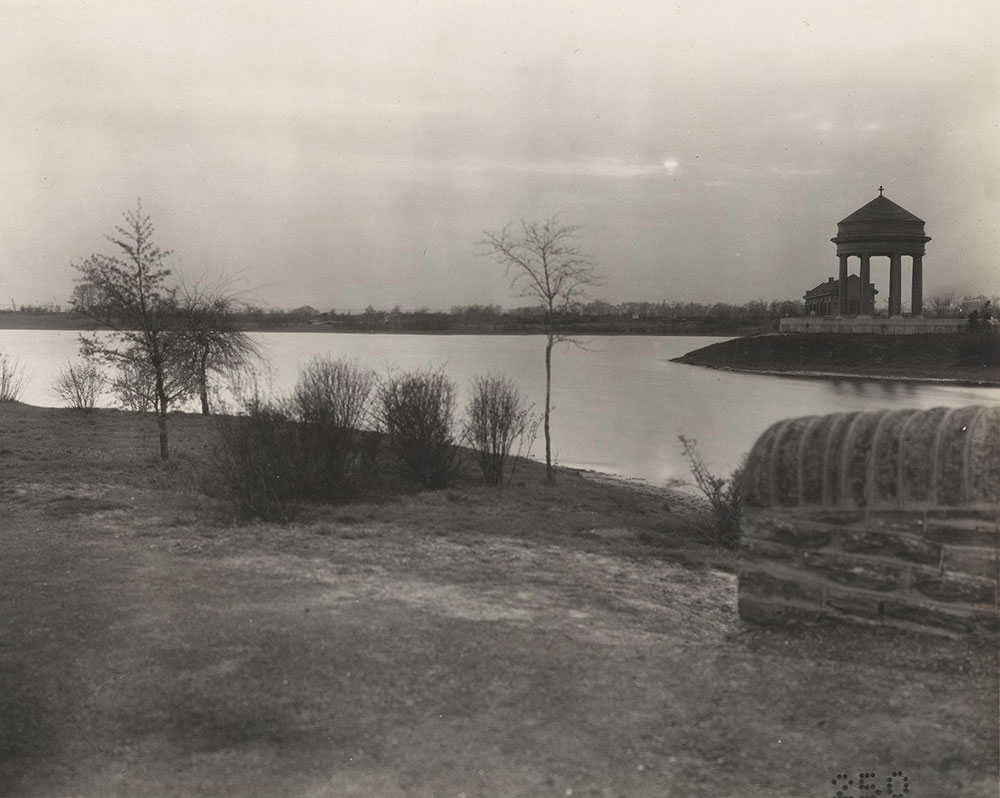
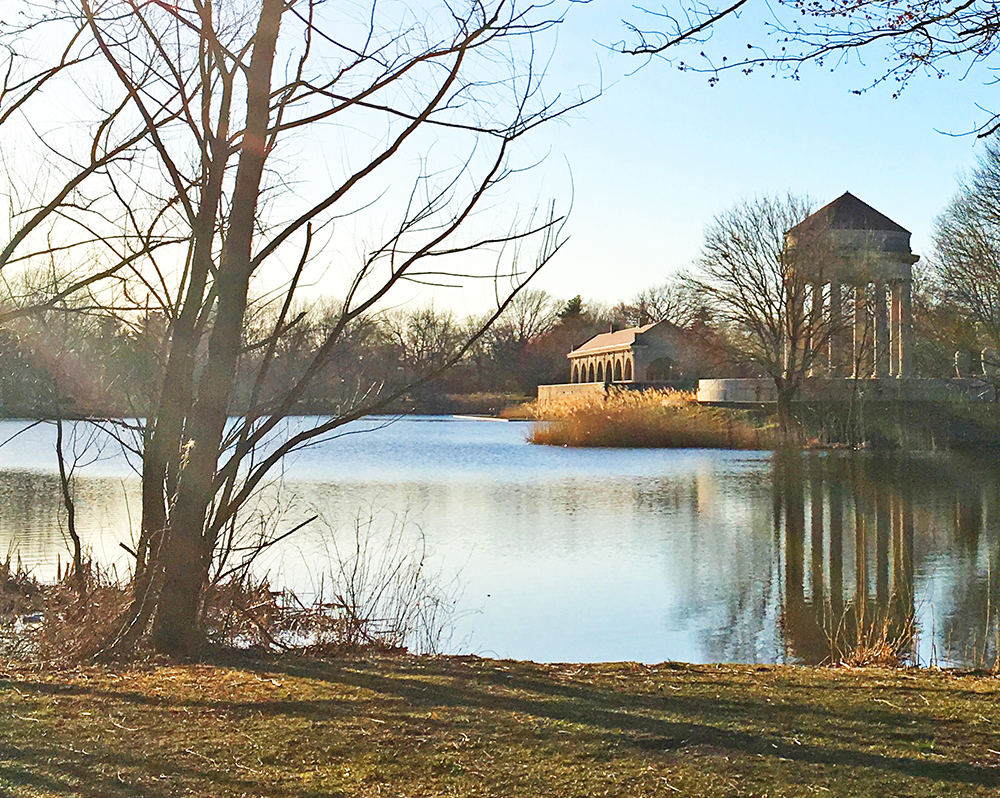
Before: View of Sesqui-Centennial International Exposition site approximately one year before the 1926 event. Courtesy of Free Library of Philadelphia, Print and Picture Collection. After: The same view in 2018. Photo by Lindsey Walker
FDR Park has undergone a number of changes since the Olmsted Brothers’ original design. Today, the city park functions more like a regional park than a city park, drawing people from all over the city, Delaware, New Jersey, and beyond.
Tracey Rae Beck, Executive Director of the American Swedish Historical Museum, says, “Since I have started taking regular walks in the park, I am equally impressed by the incredible and beautiful diversity of people who have made this park their special place—all ages and nationalities.”
Capozzi adds that FDR Park means a lot to so many people because it offers diverse ways to enjoy and experience it.
However, it hasn’t always been smooth sailing for FDR Park. “There was a period of serious decline and neglect,” she recalls. “Fourteen years ago, a reconstituted Friends of FDR group took over and has been working relentlessly to push for reforms, resources and improvements ever since.”
Today, FDR Park battles with litter, maintenance, invasive species, and perhaps most importantly, flooding. It was, after all, originally wetlands, but today it’s not able to handle the site’s ecological issues.
That’s what makes this Park Plan so important, says Beck.
“I believe we want the same things that we have always wanted, that more and more people will get involved at the park and use it in positive ways. The master planning process will help us prioritize the needs within the park so that as we are able to raise money for improvements, we will have a strategy in place for what should be done first.”
FDR Park: Future
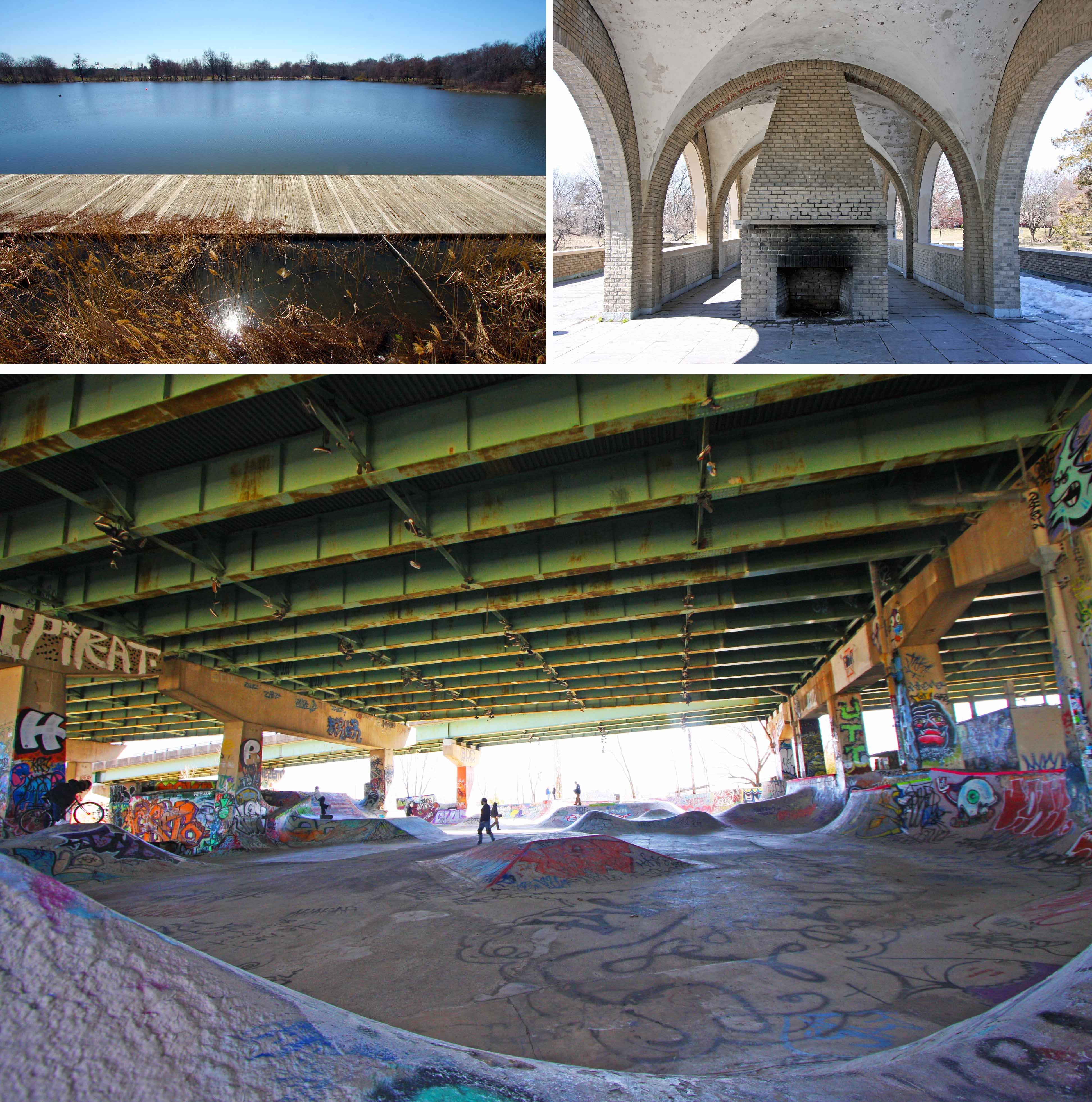
Top: FDR Boathouse overlooking Edgewater Lake. Bottom: FDR Skate Park beneath I-95. Photos by Melissa Romero
What’s next for FDR Park? That’s what the Park Plan aims to figure out. To come up with a shared vision for the future of the park, the planning team will spend the next nine to 12 months engaging with the community to find out what is and isn’t working for the park, and what investments need to be made to achieve the vision, and how the community can work together to successfully steward the park into its second century.
Capozzi encourages the community to play an active role in the planning process, all the while understanding that it will be a longer process and physical improvements will not be immediate. “It’s so important to plan comprehensively and not just do projects piece-meal or haphazard,” she says.
“The goal is not to turn back the clock,” says WRT landscape architect Charles Neer, “but to take cues from the Olmsted Brothers’ original vision and create win-win scenarios for the park.”
To learn more about the FDR Park Plan and sign up for updates, visit our Capital Projects page.
